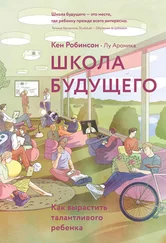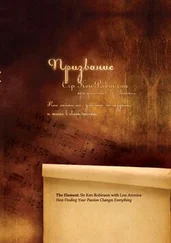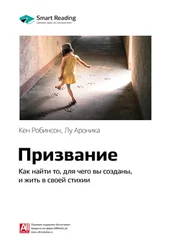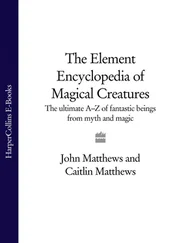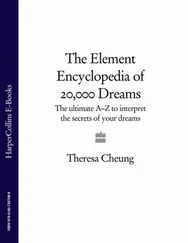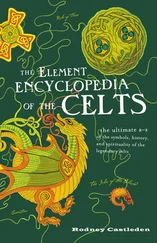Кен Робинсон - The Element
Здесь есть возможность читать онлайн «Кен Робинсон - The Element» весь текст электронной книги совершенно бесплатно (целиком полную версию без сокращений). В некоторых случаях можно слушать аудио, скачать через торрент в формате fb2 и присутствует краткое содержание. Год выпуска: 2009, ISBN: 2009, Издательство: Penguin Books Ltd, Жанр: Самосовершенствование, на английском языке. Описание произведения, (предисловие) а так же отзывы посетителей доступны на портале библиотеки ЛибКат.
- Название:The Element
- Автор:
- Издательство:Penguin Books Ltd
- Жанр:
- Год:2009
- ISBN:9780141911250
- Рейтинг книги:3 / 5. Голосов: 1
-
Избранное:Добавить в избранное
- Отзывы:
-
Ваша оценка:
- 60
- 1
- 2
- 3
- 4
- 5
The Element: краткое содержание, описание и аннотация
Предлагаем к чтению аннотацию, описание, краткое содержание или предисловие (зависит от того, что написал сам автор книги «The Element»). Если вы не нашли необходимую информацию о книге — напишите в комментариях, мы постараемся отыскать её.
The Element — читать онлайн бесплатно полную книгу (весь текст) целиком
Ниже представлен текст книги, разбитый по страницам. Система сохранения места последней прочитанной страницы, позволяет с удобством читать онлайн бесплатно книгу «The Element», без необходимости каждый раз заново искать на чём Вы остановились. Поставьте закладку, и сможете в любой момент перейти на страницу, на которой закончили чтение.
Интервал:
Закладка:
The best news in all of this is that the physical development of the brain is not a straightforward, one‐way linear process. Our brains don’t stop developing when we get our first set of car keys (though the insurance companies would like to suggest as much). Harvard neurobiologist Gerald Fischbach has performed extensive research in brain cell counting and has determined that we retain the overwhelming majority of our brain cells throughout our lives. The average brain contains more neurons than it could possibly use in a lifetime, even given our increased life expectancies.
In addition, research indicates that, as long as we keep using our brains in an active way, we continue to build neural pathways as we get older. This gives us not only the ongoing potential for creative thought, but also an additional incentive for continuing to stretch ourselves. There is strong evidence to suggest that the creative functions of our brain stay strong deep into our lives: we can recover and renew many of our latent aptitudes by deliberately exercising them. Just as physical exercise can revitalize our muscles, mental exercise can revitalize our creative capabilities. There’s extensive research going on now regarding neurogenesis, the creation of new brain cells in adult humans. It’s becoming clear that, contrary to what we believed for more than a century, the brain continues to generate new cells, and certain mental techniques (such as meditation) can even accelerate this.
We can admire the remarkable work done by people like Georgia O’Keeffe, Albert Einstein, Paul Newman, and I. M. Pei late in their lives, but we should not consider this work remarkable because they did it late in life. These people were simply high achievers who kept their brains sharp so they could continue to be high achievers. That they accomplished what they did at advanced ages should not surprise us nearly as much as it often does.
I mentioned earlier that it’s unlikely that a centenarian will take the lead in Swan Lake . It’s not impossible, just unlikely. The reason, of course, is that, at least until medical science takes several leaps forward, some of our capacities do deteriorate with age, especially physical athleticism. There’s not much point in denying this, though some of us try desperately to do so, to the point of embarrassing ourselves in public.
However, this isn’t true of all of our capacities. Like a good wheel of Parmigiano‐Reggiano, some of them actually improve over time. There seem to be seasons of possibility in all of our lives, and they vary according to what we’re doing. It’s widely accepted that our abilities in mathematics, for example, tend to grow and peak in our twenties and thirties. I don’t mean the ability to work out the food bill or to calculate the odds of your team winning the Super Bowl. I’m speaking about the kind of higher math done by world‐class mathematicians, the Terence Taos of the world. Most math geniuses have done their most original work by the time the rest of us have signed up for our first mortgages— which is something we probably wouldn’t do if we were better at math. The same is true of learning the technical skills of playing a musical instrument.
But in other ways and in other areas, maturity can be a genuine advantage, especially, for example, in the arts. Many writers, poets, painters, and composers have produced their greatest work as their insights and sensitivities deepened with age. One can say the same about disciplines as diverse as law, cooking, teaching, and landscape design. In fact, in any discipline where experience plays a significant role, age is an asset rather than a liability.
It follows, then, that “too late” arrives at various times, depending on where your search for the Element takes you. If it’s toward internationally competitive gymnastics, it might be too late by the time you’re fifteen. If it’s toward developing a new style of fusion cuisine, “too late” might never come. For most of us, we’re not even close to “too late.”
Engaged Forever
One of the results of seeing our lives as linear and unidirectional is that it leads to a culture (true of most Western cultures, in fact) of segregating people by age. We send the very young to nursery schools and kindergartens as a group. We educate teenagers in batches. We move the elderly into retirement homes. There are some good reasons for all of this. After all, as Gail Sheehy noted decades ago, there are predictable passages in our lives, and it makes some sense to create environments where people can experience those passages in an optimal way.
However, there are also good reasons to challenge the routines of what really amounts to age discrimination. An inspiring example is a unique educational program in the Jenks school district of Tulsa, Oklahoma.
The state of Oklahoma has a nationally acclaimed early‐years reading program, providing reading classes for three‐ to five‐year‐olds throughout the state. The Jenks district offers a unique version of the program. This came about when the owner of another institution in Jenks—one across the street from one of the elementary schools—approached the superintendent of schools. He’d heard about the reading program and wondered if his institution could offer some help. The superintendent responded positively to the idea and, after clearing some bureaucratic hurdles, welcomed the other institution’s help.
The other institution is the Grace Living Center, a retirement home.
Over the next few months, the district established a preschool and kindergarten classroom in the very heart of Grace Living Center. Surrounded by clear glass walls (with a gap at the top to allow the sounds of the children to filter out), the classroom sits in the foyer of the main building. The children and their teachers go to school there every day as though it were any other classroom. Because it’s in the foyer, the residents walk past it at least three times a day to get to their meals.
As soon as the class opened, many of the residents stopped to look through the glass walls at what was going on. The teachers told them that the children were learning to read. One by one, several residents asked if they could help. The teachers were glad to have the assistance, and they quickly set up a program called Book Buddies. The program pairs a member of the retirement home with one of the children. The adults listen to the children read, and they read to them.
The program has had some remarkable results. One is that the majority of the children at the Grace Living Center are outperforming other children in the district on the state’s standardized reading tests. More than 70 percent are leaving the program at age five reading at third‐grade level or higher. But the children are learning much more than how to read. As they sit with their book buddies, the kids have rich conversations with the adults about a wide variety of subjects, and especially about the elders’ memories of their childhoods growing up in Oklahoma. The children ask things about how big iPods were when the adults were growing up, and the adults explain that their lives really weren’t like the lives that kids have now. This leads to stories about how they lived and played seventy, eighty, or even ninety years ago. The children are getting a wonderfully textured social history of their home‐towns from people who have seen the town evolve over the decades. Parents are so pleased with this extracurricular benefit that a lottery is now required because the demand for the sixty available desks is so strong.
Something else has been going on at the Grace Living Center, though: medication levels there are plummeting. Many of the residents on the program have stopped or cut back on their drugs.
Читать дальшеИнтервал:
Закладка:
Похожие книги на «The Element»
Представляем Вашему вниманию похожие книги на «The Element» списком для выбора. Мы отобрали схожую по названию и смыслу литературу в надежде предоставить читателям больше вариантов отыскать новые, интересные, ещё непрочитанные произведения.
Обсуждение, отзывы о книге «The Element» и просто собственные мнения читателей. Оставьте ваши комментарии, напишите, что Вы думаете о произведении, его смысле или главных героях. Укажите что конкретно понравилось, а что нет, и почему Вы так считаете.


